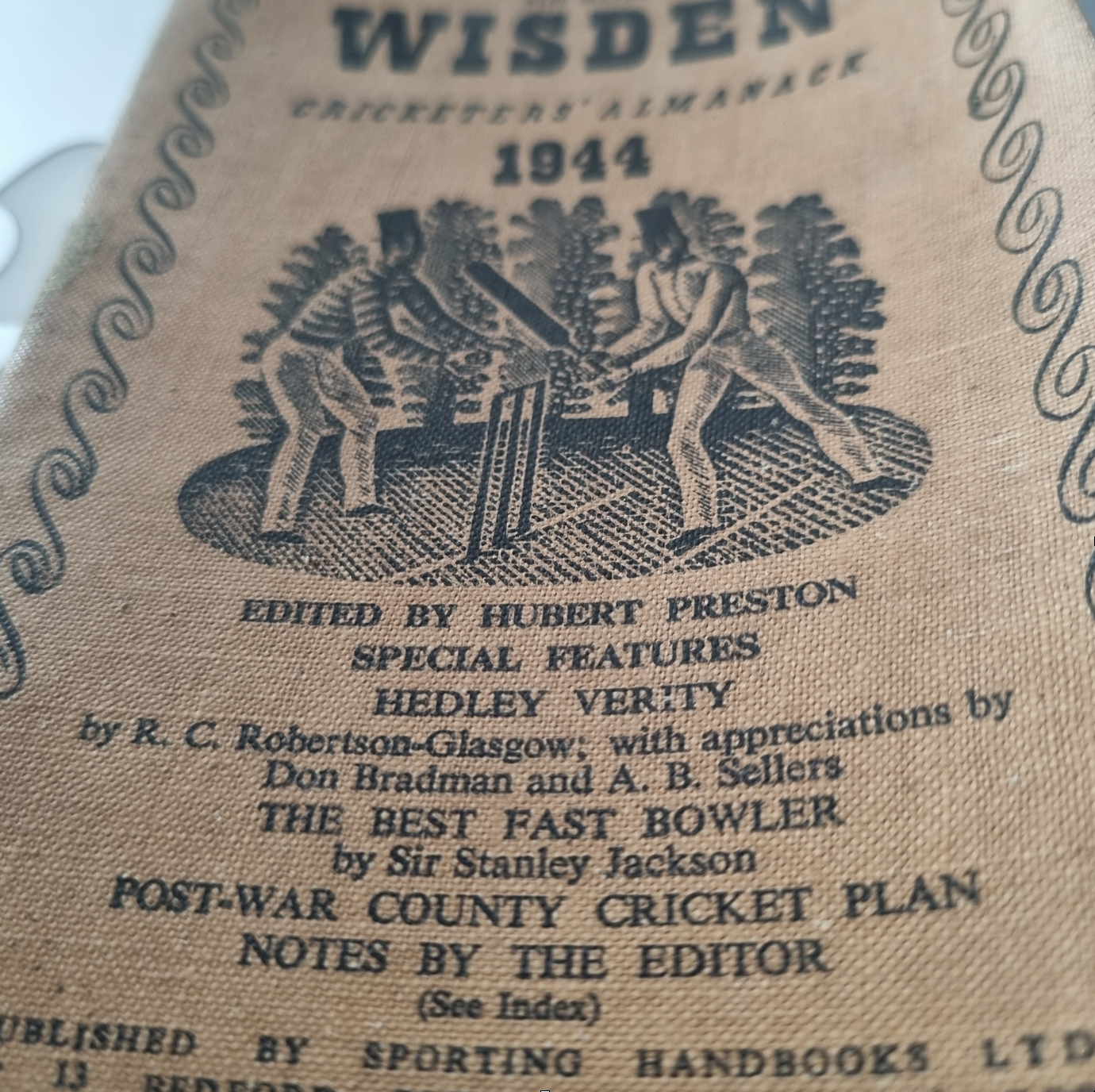“How can we look at stadiums to discover who we are and what we have in common with people past, present, near, middle, and far?” – Christopher Gaffney
Wander into Hollywoodbets Kingsmead cricket stadium and take in the photographs adorning the walls. See the boards honouring a century, five wickets in an innings. Walk into the museum where a wonder of books and memorabilia is laid out. Stand on the steps of the dressing room and listen to an empty stadium speak.
If you heed the silence, you will hear rattling stumps and the strangled appeals of the ghosts of players past. The men who graced this field left other traces too, like entries in the Wisden’s, signed bats and scorecards. Kingsmead holds tales to borrow from Hamlet that will make “each particular hair to stand on end like quills upon the fretful porcupine”.
Ponder over the Timeless Test of 1939.
There were other timeless Tests but this, the last, played on the edge of a World War, still pulls at the heart. With play called on the 3rd of March, the game only ended on the afternoon of the 14th.
Nothing captures the ceaselessness of that contest better than the story of Springbok captain, Alan Melville, who gifted the crew of Imperial Airways four tickets to the game. The crew watched the first day, then left to return to London. It was a four-day journey. There, they gave the returning crew the tickets, who arrived four days later, in time to catch the last day of the match.
And what a last day it was. Set to make 696, England fell just 42 runs short with five wickets in hand as a Durban squall brought the game to an abrupt end. History records the immortal words of the England Manager AJ Holmes: “I’m glad there was no result. It showed that the game was more than victory or defeat.” Holmes was a Flight-Lieutenant and soon he would be involved in a game where the choices were victory or death.
After the game, there was a mad dash by train to Cape Town. The Athlone Castle was scheduled to sail for England on the 17th of March.
War on the horizon
Hitler was on the march. Chamberlain’s appeasement efforts were in tatters. 1939 saw England’s series against West Indies curtailed. The left arm spinner, Hedley Verity, who famously bowled a record 766 balls in the Timeless Test, was in the team against the West Indies.
He would never play for England again. The 1944 Wisden records that as a Captain in the Green Howards “he died of his wounds a prisoner of war in Italy on 31 July, 1943… He received his wounds in the Eighth Army’s first attack on the German positions at Catania, in Sicily… The objective was a ridge with strong points and pillboxes… As the men advanced, through corn two feet high, tracer bullets swept into them… the enemy used… fire-bombs, setting the corn alight… The enemy fire increased and… Verity was hit in the chest.”
As you follow Verity’s cricketing life, you get consumed by fragments of history, clues pushing to beginnings without end.
Verity made his debut against New Zealand in July 1931. England batted first and made 416. One of the century-makers was Kumar Shri Duleepsinhji. In the 1929 Springbok tour to England, he was dropped after the first Test. His lack of runs in that Test was a mere blip in what was an amazing run of county form.
South Africans had already felt the lash of Duleepsinhji’s bat when he was selected for the MCC before the first test. He sweetened 74 and 27 not out. The great West Indian cricketer, Learie Constantine, reflected that the cricketing authorities, “could not face the risk of a century being scored against their team by a coloured man”.
Constantine’s view was given credence when Duleepsinhji was even overlooked for the Lord’s Gentlemen XI. Duleepsinhji was unfazed and in the series against Australia averaged close to 60. But he was not selected for the 1930/31 MCC tour of South Africa.
The South African cricket writer who covered the 1929 tour, Louis Duffus, was later to draw the line between Duleepsinhji and D’Oliveira: “England knows the law when a much greater cricketer, KS Duleepsinhji could have been chosen to tour this country. He was not selected, and nothing was ever said about it.” But we must return to home soil.
Durban duality
Would those playing and watching the Timeless Test have known and cared that, within spitting distance of Kingsmead in Somtseu Road, the Durban and District African Cricket Union hosted a national tournament that ran into the first week of January 1939?
Some of the games were played on fields adjacent to Kingsmead. It was the first time African cricketers would have had sight of turf wickets. At the end of the tournament, The Mercury reported that “cricket, that most English of all games, is at this moment making history by taking root in the life of the Uzulu. It is not merely becoming transplanted to African fields. It did that a long time ago. It is taking hold of Africans themselves, bringing them in flannels to the wicket…”.
1939 was the acme of African cricket in Durban. Clubs like Fight Forever were decimated by forced removals from the CBD while Durban Union Jacks had their flag lowered by the two-pronged attack of African and Afrikaner nationalism.
In this regard how politically pretentious is the KZN Cricket Union logo with its spear and knobkierie and shield! Is there anything here related to cricket? (Disclosure; I do serve on an official structure of the KZNCU).
But I am losing my concentration. Time to take guard.
In the 1944 Wisden, there is one arresting line: “As an all-round fielder, Verity was no more than sound, but to his own bowling, or at backward point, he sometimes touched brilliance; and there sticks in the memory the catch that he made at Lord’s in 1938, when McCabe cut one from Farnes crack from the bat’s middle.”
Kenneth Farnes also played in the timeless Test. Six foot five, he was a fast bowler and a brilliant slip fielder. Hedley, Yorkshire and Farnes were great mates. There is a photograph of them when they arrived back in England from South Africa.
I have looked at that photograph so many times. Hedley’s father so proud. The two men at the top of their game. Farnes joined the RAF, trained as a pilot in Canada. Returning to England he crashed over Oxfordshire on 20th October 1941. Verity, (40 Test Matches, 144 wickets), was 38 when he died. Farnes (15 Tests, 60 wickets), was 30.
There was also a South African who played in the timeless Test who was to die in the war: Lieutenant Arthur Chudleigh Beaumont Langton. Langton was in the team that beat England at Lords in July 1935. His second innings of 44, in partnership with the mighty Bruce Mitchell, was pivotal in tipping the balance. The first ever victory over the old enemy on English soil.
He enlisted with the South African Air Force. On 27th November 1941 while flying over Maiduguri, Nigeria, he crashed and died. Like Farnes, he was just 30. In Nigel McCrery’s, The Coming Storm, he notes that Langton is commemorated at “Maiduguri Cemetery, European section, grave 2”.
The war might have been in part against the Nazi ideology of racial supremacy, but Empire still separated you at birth and death.
In 1970 the Aussies were in town. I was 11. My father had an amazing network of contacts. He found out in which hotel the Aussies were staying on the Golden Mile. We stood outside waiting. I had a little exercise book with my father’s prized Sheaffer pen.
By now my head was filled with stories of the Aussie mystery bowler Johnny Gleeson spun by my father and my uncle Desmond. He had an action that was going to bowl an off-spinner, but it would be a leg-spinner and so they went on. And there he was. My young blood froze and then sprung into life. I caught him just under the entrance marked “Whites Only”. He graciously signed the page, and flicked his hair back with fingers longer than a ruler.
Walking home I knew that we would find a way to attend the Test match just a day away. Little did I know that the game would, like Hamlet’s Ghost, make my “two eyes like stars start from their spheres”. DM



















 Become an Insider
Become an Insider
Beautifully written Ashwin.
Yes, definitely.
Superbly crafted and poignant article. Thanks for sharing with us Ashwin and DM
Journalism at its best. Thank you!
History brought to life in a very commendable way. Thank you.